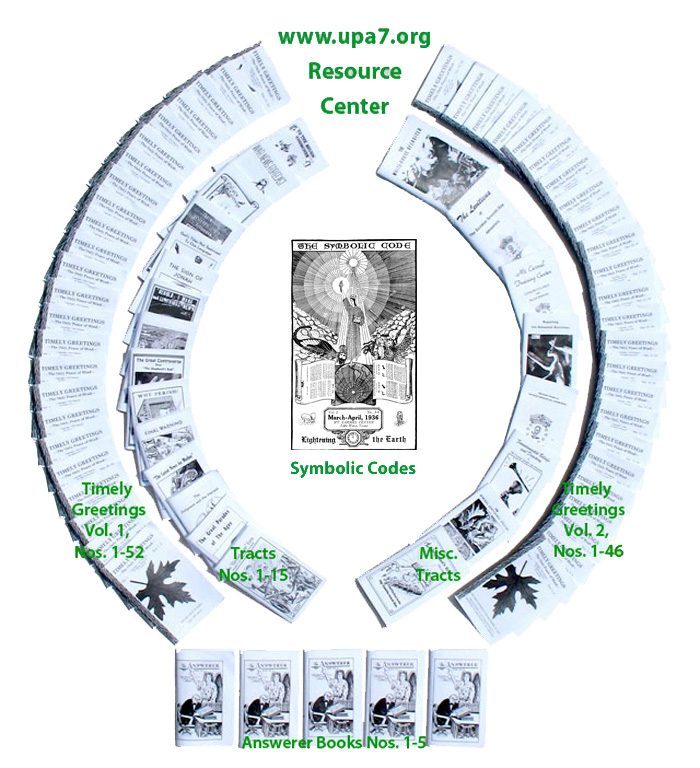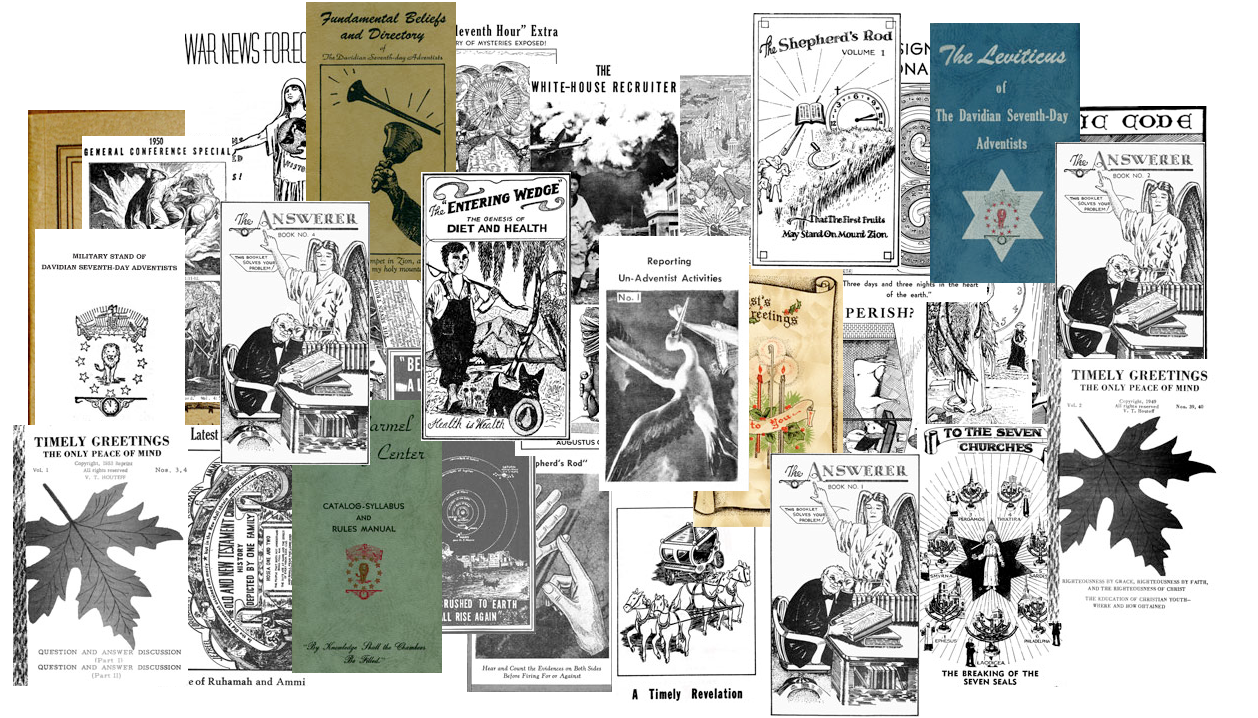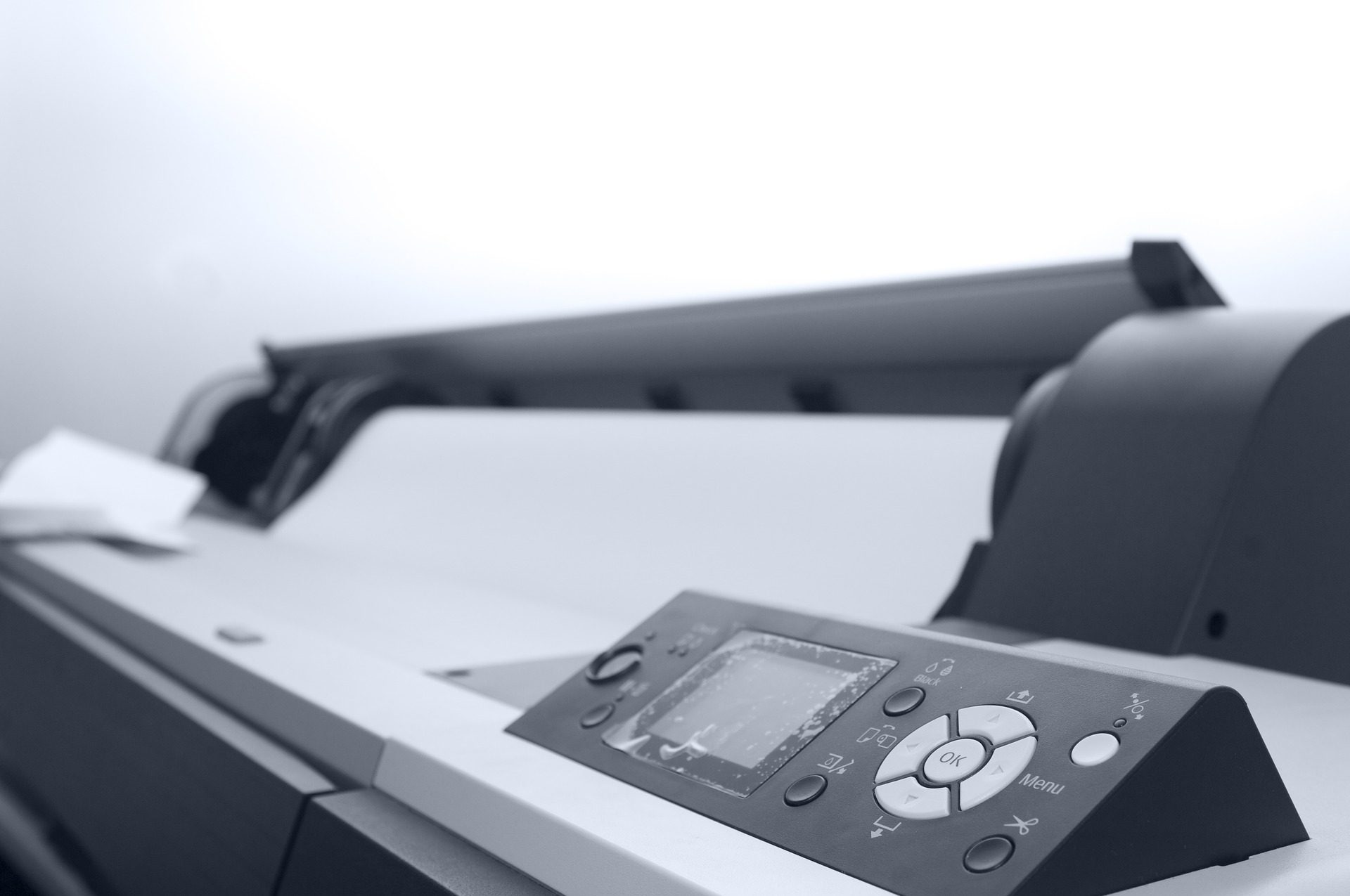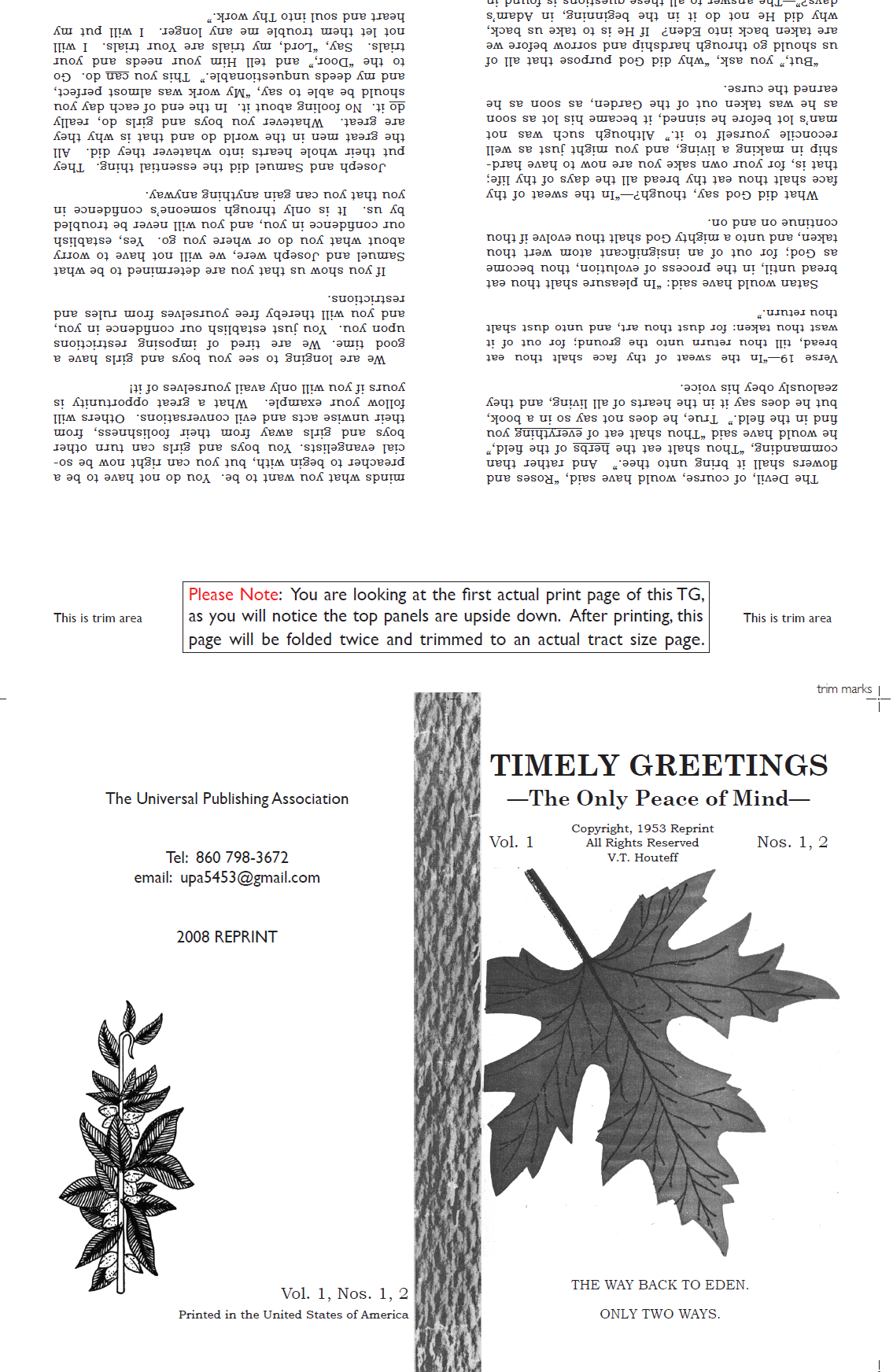“In a large degree through our publishing houses is to be accomplished the work of that other angel who comes down from heaven with great power and who lightens the earth with his glory.”—Testimonies for the Church, Vol. 7, p. 140.

Come see for yourself and together with other brethren, whether with friends and family, with groups, or even alone and learn how to publish Rod tract literature in a remarkably simple way, even in the convenience and comfort of your own home, by using portable and affordable printing equipment. You will need neither copyright permission(s)*, nor to depend upon anyone but God for help. These methods will make production and distribution of Rod literature much less cumbersome and more economical (i.e., minimal postage) in your local areas.
For detailed instructions on how to produce out your own Rod tract literature please check out the printing instructions below which has ready-formatted tracts in sub-menus such as Tracts Nos. 1-15, Misc. Tracts, Answerer Books, Timely Greetings Vol. 1, and Timely Greetings Vol. 2. For the other links “About Us” and “Announcements”, please go to the menu bar.
We will gladly give prompt attention to any of your questions, comments, or to arrange for a demonstration, so please feel free to contact us, find our details on the contact us page.
Printing Instructions
Printing, Folding, and Cutting the Shepherd’s Rod Literatures from Printable Document Files (PDF)
Printing Objectives
To print original-based Shepherd’s Rod tract size literature in the convenience and comfort of your own home using affordable and portable equipment, even by yourself!
To suggest different processes that can be accomplished by one person or, with a larger group of like-minded believers.
To provide simple step-by-step instructions which will have you producing your very own Rod literature in little time.
To use minimal printing equipment, this being a basic personal computer (Windows, or Mac OS), a laser printer, a long reach stapler, a straight edge ruler, and a razor knife, unless the next level can be afforded. Please see other choices of production speed at the end of this instruction article.

Step 1
Visit the print media section and find the tract you want to print. PDF versions of the tracts have been made available to you.

Step 2
Download the tract to your local computer or device and using the latest version of Adobe Acrobat Reader open the tract and set some printer settings.

Step 3
Print using a lazer printer with a duplexer for double sided printing and learn how to fold the tracts into pocket size booklets.
The Printing Process
1. Visit the website https://upa7.co.za/print-media/
2. Using the navigation menu you can select Print Media and choose one of the printable literature in their appropriate subfolders (Tracks; Misc. Tracks; Answerer Books; Timely Greetings, Vol. 1; Timely Greetings, Vol. 2 etc…). Please click to open the desired subfolder.
3. After locating the desired tract of which you are interested, please click the title to download a printable document file (PDF) of the track onto your desktop from the website. This should automatically open if you have a copy of Acrobat Reader (version 5.0 or later) installed on your computer.
Please note:
· Once the Acrobat Reader program opens the file, go to the Page Setup button under the File menu and set the Format to: “Any Printer”
· Set the Paper Size: to “A4” (8.27 in. x 11.69 in.).
· Make certain that the Page Scaling option box is set to: “None”.
· The Preview: composite box should show a document size of 8.5 in. X 14 in.
· Print a test page and make sure that the entire page is printed without having some of the bottom margin cut-off.
· If you are still having trouble please give us a call or email us to arrange for a consultation, or a “hands-on” demonstration.
4. Once the selected file opens you should see a page with four panels on it (each panel is a page from the original printed tract).
· You will notice that the top two panels are upside down and the bottom two are right side up (see sample page at right).
· This is because the layout is not set up for direct reading but for printing into a sheet that will be folded, collated, stapled, and cut into a tract.
· The page numbering sequence (imposition) will appear to be all scrambled up. This is because you are looking at an actual formatted layout for the print page.
· The print pages will be folded twice into a “signature” (a full print sheet that consists of 8 original tract pages) and collated with other “signatures” to make up the complete tract.
· The collated “signatures” will then be stapled together and trimmed to size to become an actual tract in the original size as Bro. Houteff had them printed.
· Please follow along as we will go through this process in more detail so that you can soon be printing your own copies of the original Shepherd’s tract literature!
· Rest assured, this may seem complicated, but with God’s help once you have finished your first few tracts the process is really quite simple.

5. Using a printer with a duplexer unit which allows for double-sided printing, then the print process is very quick and easy. Just issue a print command and when the print dialog page pops up make sure you specify double-sided printing for legal size (8.5 in. X 14 in.) paper. You will have to locate the proper menu box to check this preference (it is found under the layout menu).
Note: By using a printer that prints only on one-side of the paper (single-sided), then you will first have to print all of the odd pages first, which can be done by specifying the sequence 1, 3, 5, … in the pages range box. On most printers you can also specify to print odd-pages only in a page handling dialog box. This saves time and gives better accuracy rather than having to type in a long string of numbers. Once the pages are printed out then you have to carefully shuffle and rotate the pages to print on the backside of each one in the proper sequence.
· First take the printed sheets straight from the output tray being careful not to rotate or flip the pages.
· Next shuffle the pages by placing the top page on the bottom going through the whole pile so that in the end the top ends up on the bottom and the bottom page ends up on the top (this is called “inverting the stack”).
· Once this is done carefully rotate the stack 180 degrees (top to bottom) and place it directly back into the input tray.
· Next print the even pages only starting from page 2 to the end. The output should then have a set of sheets printed on both sides in the proper sequence. It may take some trial and error to get the printing right, but keep trying until you succeed. Once you have done it correctly, it is as easy as 1, 2, 3

Special Instructions for tracts having an odd number of print pages:(e.g., 5 or 7, such as for many of the TG’s.)
· Print the odd pages first.
· Remove them from the output tray and set aside the top sheet being careful not to flip or rotate it. You will latter have to place this sheet back into the input tray with this same orientation as it came out of the printer.
· After printing on the back sides of the remaining sheets in the same manner as described in step 5 above, now you are ready to take care of the odd sheet.
· Place it back into the input and print the same page number as it is in the original spread. For example, if the sheet is page number 7 in the original spread then print only page 7 in the page range box of the print dialog menu. In effect you are printing the exact same page content on both sides of the paper.
· You will notice that when this page is folded in the manner described in step 6 below (the cross-fold) and then cut in half, lengthwise you end up with two identical centerfolds of the tracts (check the page numbering to confirm the correct sequence). This now becomes the center portion of the tract.

